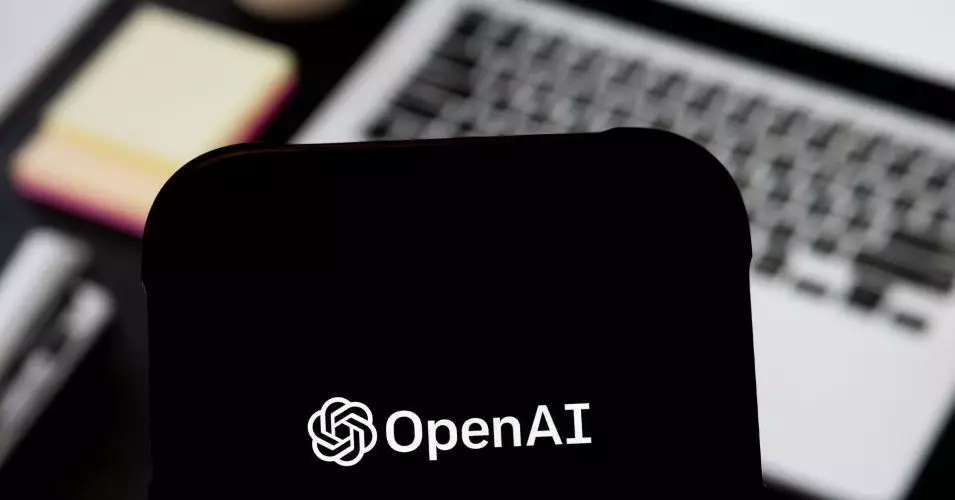Today marks a pivotal moment in the realm of artificial intelligence as Sam Altman, the CEO of OpenAI, announced the forthcoming release of an open-weight AI model. The excitement brewing around this new model is palpable as it comes as a direct countermeasure to the remarkable success of DeepSeek’s R1 model and the rising popularity of Meta’s Llama models. OpenAI, traditionally seen as a bastion of closed-source models, is finally embracing an open framework, revealing a willingness to adapt in a rapidly evolving landscape.
Altman’s admission that OpenAI was “on the wrong side of history” concerning open models showcases a significant shift in corporate ethos. The AI landscape is changing—competition is tightening, and the call for transparency in AI development is louder than ever. By stating, “now it feels important to do,” Altman isn’t just acknowledging the industry trends but is issuing a clarion call for OpenAI to spearhead a new movement toward responsibility and accessibility in AI technology. This decision reflects a broader acknowledgment that collaborative progress, rather than siloed developments, can lead to stronger, safer AI systems.
The Implications of Open-Weight Models
The introduction of an open-weight model carries significant implications for both developers and end-users. Open-weight models allow for intricacies within the AI’s neural networks to be accessed, modified, and enhanced, leading to cost-effective solutions tailored to specific needs. This democratization of AI technology could level the playing field, enabling smaller players and independent developers to innovate without the financial burdens typically associated with large AI systems.
Clement Delangue, cofounder of HuggingFace, aptly noted, “this is amazing news.” The real power of open weights lies in their flexibility. Such models can be adapted for specialized uses, and they present an invaluable opportunity to manage sensitive information in a more secure environment. Accessibility transcends mere cost; it opens avenues for broader experimentation and fosters innovation in various fields, from healthcare to finance.
However, this newfound power comes with inherent risks. As OpenAI prepares to unveil its model, it raises questions about responsible deployment. The potential for misuse of open-weight models looms large; cybersecurity threats and unethical applications could burgeon if appropriate oversight isn’t executed. This necessitates a heightened commitment to ethical AI development, ensuring that tools designed to empower do not enable harm.
OpenAI’s Commitment to Rigorous Safety Standards
In his recent announcement, Altman emphasized OpenAI’s dedication to safety. The company plans to conduct thorough testing to prevent misuse of the new model, which reflects a proactive rather than reactive stance toward AI governance. Johannes Heidecke, a researcher at OpenAI, reiterated this commitment, stating that they would not release models that pose catastrophic risks. Yet, the question remains: how can OpenAI navigate this precarious balance between innovation and responsibility?
The Preparedness Framework, as referenced by Heidecke, suggests a structured approach to anticipate and mitigate potential pitfalls linked to open models. This foresight is commendable, yet the dynamic nature of AI means that risks can evolve, often in unforeseen ways. Thus, the need for ongoing evaluation and adaptation of safety measures will be paramount.
Existing frameworks can only guide strategy; real-world application will be the true test of these protocols. OpenAI’s commitment to conducting developer events with early prototypes shows promise for fostering dialogue and collaboration in the community—fostering collective safety measures and ethical standards.
A Movement Beyond OpenAI
The ripple effects of OpenAI’s open-weight initiative could catalyze a more profound cultural shift throughout the AI industry. The initial move by Meta to embrace open models with Llama has opened avenues that other companies are now eager to explore. However, many models still cling to secrecy regarding training data and operational specifics, giving rise to calls for greater transparency across the board.
Developers are increasingly hungry for the autonomy that open models provide, yet navigating the licensing restrictions imposed by companies like Meta poses challenges. OpenAI’s move to a more open system may influence competitors to rethink their strategies, leading to a more collaborative environment where knowledge-sharing is prioritized over gatekeeping.
In a world where the dual-edged sword of technological advancement carries the potential for both benefit and harm, the developments unfolding at OpenAI underscore the importance of an ethical approach. The road ahead may be fraught with challenges, but the prospect of democratized AI beckons a future where innovation is rooted in responsibility and collective progress.

